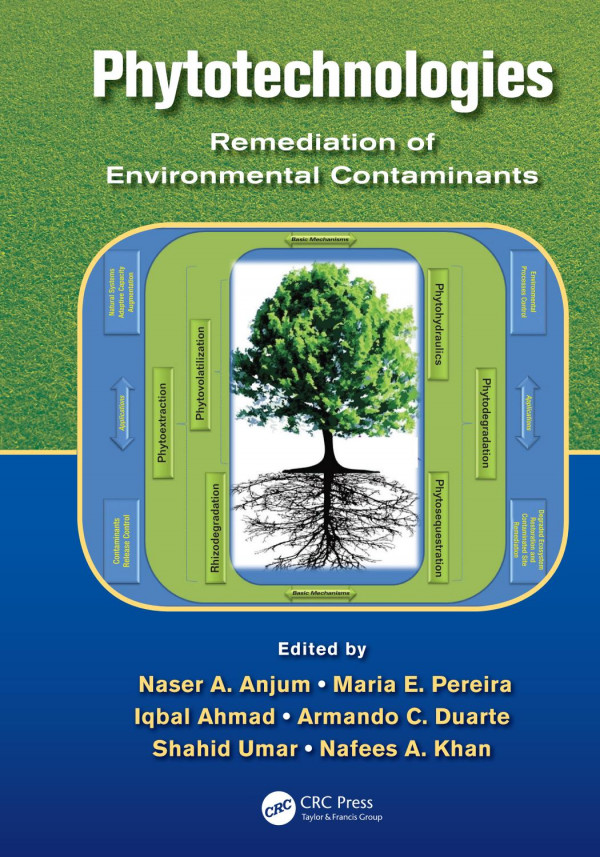

Most ebook files are in PDF format, so you can easily read them using various software such as Foxit Reader or directly on the Google Chrome browser.
Some ebook files are released by publishers in other formats such as .awz, .mobi, .epub, .fb2, etc. You may need to install specific software to read these formats on mobile/PC, such as Calibre.
Please read the tutorial at this link. https://ebooknice.com/page/post?id=faq
We offer FREE conversion to the popular formats you request; however, this may take some time. Therefore, right after payment, please email us, and we will try to provide the service as quickly as possible.
For some exceptional file formats or broken links (if any), please refrain from opening any disputes. Instead, email us first, and we will try to assist within a maximum of 6 hours.
EbookNice Team

Status:
Available4.5
23 reviews
ISBN-10 : 1439875189
ISBN-13 : 9780429063589
Author: Naser A. Anjum, Maria E. Pereira, Iqbal Ahmad, Armando C. Duarte, Shahid Umar, Nafees A. Khan
Phytotechnologies: Remediation of Environmental Contaminants highlights the use of natural and inherent traits of plants and associated microbes to exclude, accumulate, or metabolize a variety of contaminants, with the goal of efficiently and sustainably decontaminating the biosphere from unwanted hazardous compounds. Contributed by an internationa
chapter 1|6 pages
- Introduction
Title
Abstract
chapter 2|68 pages
- Heavy Metals in the Environment: Current Status, Toxic Effects on Plants and Phytoremediation
Title
Abstract
chapter 3|8 pages
- Phytotechnology—Remediation of Inorganic Contaminants
Title
Abstract
chapter 4|16 pages
- Potential of Constructed Wetland Phytotechnology for Tannery Wastewater Treatment
Title
Abstract
chapter 5|14 pages
- Phytoremediation of Petroleum Hydrocarbon–Contaminated Soils in Venezuela
Title
Abstract
chapter 6|24 pages
- Fate and Transport Issues Associated with Contaminants and Contaminant By-Products in Phytotechnology
Title
Abstract
chapter 7|14 pages
Metals and Metalloids Accumulation Variability in Brassica Species: A Review
Title
Abstract
chapter 8|28 pages
- Oilseed Brassica napus and Phytoremediation of Lead
Title
Abstract
chapter 9|26 pages
- Potential for Metal Phytoextraction of Brassica Oilseed Species
Title
Abstract
chapter 10|14 pages
- Phytoremediation Capacity of Brown- and Yellow-Seeded Brassica carinata
Title
Abstract
chapter 11|36 pages
- Phytoremediation of Toxic Metals and the Involvement of Brassica Species
Title
Abstract
chapter 12|28 pages
- Phytoremediation of Soils Contaminated by Heavy Metals, Metalloids, and Radioactive Materials Using Vetiver Grass, Chrysopogon zizanioides
Title
Abstract
chapter 13|10 pages
Effects of Biotic and Abiotic Amendments on Phytoremediation Efciency Applied to Metal-Polluted Soils
Title
Abstract
chapter 14|16 pages
- Phytoremediation: Strategies to Enhance the Potential for Toxic Metal Remediation of Brassica Oilseed Species
Title
Abstract
chapter 15|8 pages
- Enhanced Phytoextraction Using Brassica Oilseeds: Role of Chelates
Title
Abstract
chapter 16|10 pages
- Organic Acid–Assisted Phytoremediation in Salt Marshes: From Hydroponics to Field Mesocosm Trials
Title
Abstract
chapter 17|18 pages
- Plant–Microbe Enabled Contaminant Removal in the Rhizosphere
Title
Abstract
chapter 18|16 pages
- Brassica Oilseeds–Microbe Interactions and Toxic Metals Remediation
Title
Abstract
chapter 19|16 pages
- Plant Growth-Promoting Bacteria and Metals Phytoremediation
Title
Abstract
chapter 20|14 pages
Plant Growth Regulators and Improvements in Phytoremediation Process Efciency: Studies on Metal Contaminated Soils
Title
Abstract
chapter 21|16 pages
- Remediation of Sites Contaminated with Persistent Organic Pollutants: Role of Bacteria
Title
Abstract
chapter 22|8 pages
- Using Endophytes to Enhance Phytoremediation
Title
Abstract
chapter 23|14 pages
Genetically Modied Plants Designed for Phytoremediation of Toxic Organic and Inorganic Contaminants
Title
Abstract
chapter 24|14 pages
- Utilization of Different Aspects Associated with Cadmium Tolerance in Plants to Compare Sensitive and Bioindicator Species
Title
Abstract
chapter 25|54 pages
- Analytical Tools for Exploring Metal Accumulation and Tolerance in Plants
Title
Abstract
chapter 26|24 pages
Metals and Metalloids Detoxication Mechanisms in Plants: Physiological and Biochemical Aspects
Title
Abstract
chapter 27|20 pages
- Studies on Phytoextraction Processes and Some Plants’ Reactions to Uptake and Hyperaccumulation of Substances
Title
Abstract
chapter 28|38 pages
- Uptake and Metabolism of Pharmaceuticals and Other Emerging Contaminants by Plants
société québécoise des phytotechnologies
phytotechnologies skincare
phytotechnologies laboratories
phytotechnologies définition
phytotechnology labs
Tags: Phytotechnologies, Remediation, Environmental, Contaminants, Naser Anjum, Maria Pereira, Iqbal Ahmad, Armando Duarte, Shahid Umar, Nafees Khan